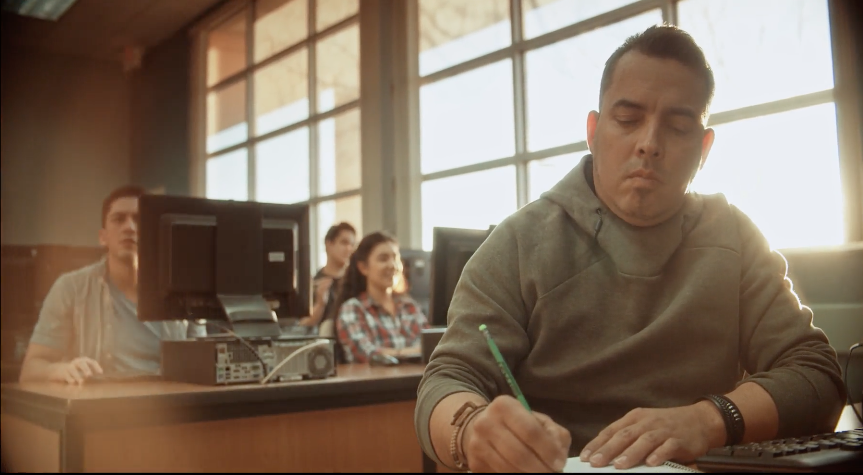
An ad campaign from West Hills Community College District called “Within our Reach” features the story of a landscaper who returns to college to help provide a better life for his family.
Written by
A young waitress balances work and school with driving her mother to the doctor; a landscaper and father of two takes a leap of faith and enrolls for a degree, encouraged by his pregnant wife; and proud parents gather in with the rest of family, taking a photo with their daughter in her graduation robe.
These stories are all told by actors in front of a camera, but they’re stories that are real and relatable to thousands in the Valley. These ads are part of an ambitious new partnership between the West Hills Community College District (WHCCD) and Univision to inform the Spanish-speaking population on the advantages and importance of a college education, along with the benefits available to help them earn a degree.
According to Amber Myrick, director of marketing, communications and public information at WHCCD, there’s a severe deficit in higher education in the San Joaquin Valley — containing 12% of the state’s population, but only 6% of the degrees. Myrick said that some communities don’t graduate any of their high school students, while some are sitting at 50% graduation rates, but the students are not going on to any form of higher education.
This in turn has led to severe poverty in the communities served, with families putting stress on their children to go straight to work to help support the family. Going to college is often seen as a gamble by students, parents and elders alike, one that takes away one more potential provider. This poverty-induced foregoing of education, however, only feeds the cycle.
“We have very low educational attainment,” Myrick said. “So throughout all the communities that we serve, you see that it’s at significantly lower than the California — or even Fresno County — averages.”
Their solution to tackling the problem is “Within our Reach,” a yearlong campaign of 60-second television and radio commercials showing Hispanic students balancing work and family while going to college. The message of the commercials, launched June 1, is not to glamorize higher education, but to send students a message — that the balancing act won’t be easy, but it will be worth the time and effort.
These commercials will then be followed up by 20-second segments providing students with information on college classes and programs that will help them overcome barriers they might encounter. There will also be 10-second Univision spokesperson endorsements of college programs, interviews with West Hills students, live TV call centers for viewers seeking more information, and participation in Univision events.
Janzen Brands CEO Gary Janzen was there to shepherd the project, connecting WHCCD with Univision, and later served as the master marketer.
“There are many people in the Hispanic community in particular that influence that decision because of these very deep cultural traditions,” Janzen said. “And this is an opportunity to use storytelling and to take advantage of the patience that West Hills is willing to give us to nurture that.”
With a Valley population that’s 59% Hispanic, Univision is the most heavily relied upon news source in the region. Jose A. Elgorriaga, Northern California director of sales for Univision, said this make their outlet the perfect partner for WHCCD’s effort.
“I think West Hills is a hidden gem, and Univision is a hidden gem, but is a real force to be reckoned with when you’re talking about the growth and the future of the Valley — especially when you talk about students,” Elgorriaga said. “Two out of every three students in Fresno and the Valley are students of color, Hispanic, so it’s a perfect partnership.”
Myrick added that nearly 70% the population in the West Hills District is Hispanic, which extends to Kings County. Hispanics also make up 90% of their Coalinga campus.
The project is expected to cost $500,000 a year, and they’re seeking donors to help in the project. Myrick insisted that they are not interested in targeting “Within Our Reach” for student enrollments — they’ve already more than met their quota, and their growth has facilitated a $50-million modernization project in Firebaugh this fall. Instead, they consider it a win if members of the Valley’s Hispanic community pursue college in any district.
“So it’s really about cultural communication,” Myrick said. “It’s really about this idea of communicating to our communities that success is within our reach, that college can transform your life… and that we can be a partner and almost a family member that helps them along the way.”
Within our reach will run for 12 months, but there are already plans to keep it going in the years ahead.








